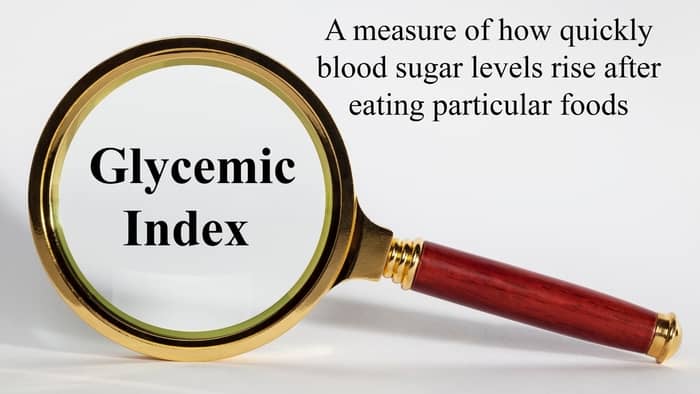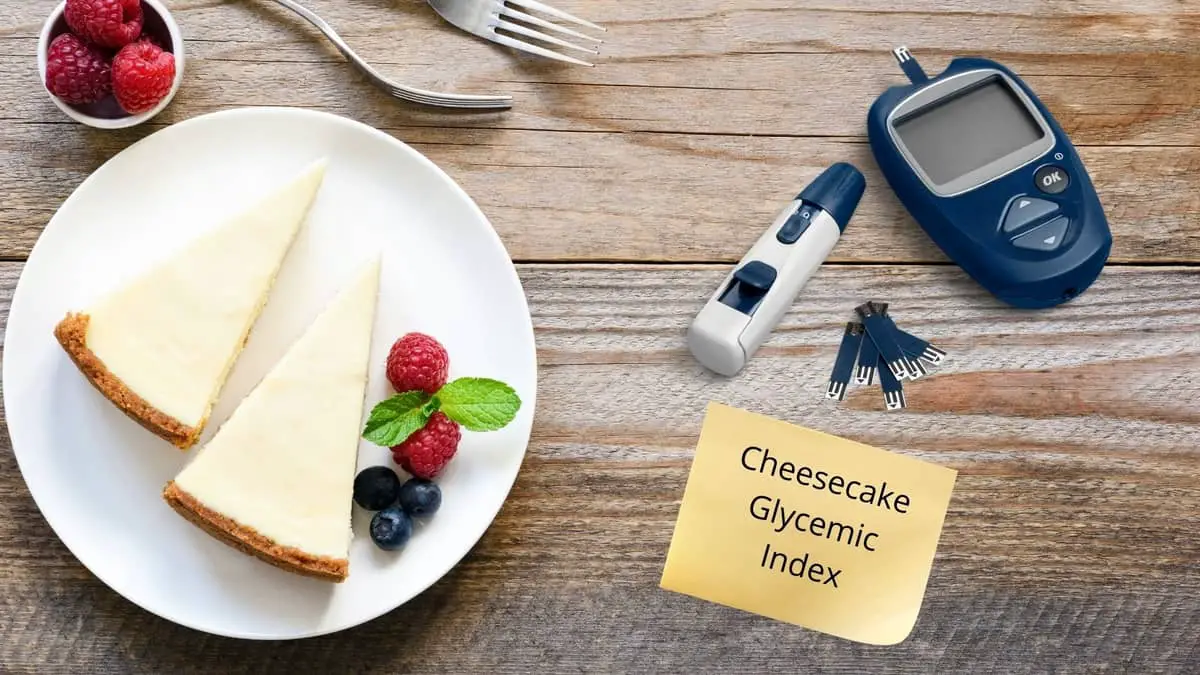By Griselda M., last updated on October 1, 2021
Wondering what the Cheesecake Glycemic Index is? Are you interested in always looking for the nutritional table content in what you’re about to eat? Don’t feel embarrassed, we all should look for it.
In this post, we have the most important information from nutrition facts. We’ve made our research carefully to bring you the exact details of what a cheesecake glycemic index is. Of course, there are too many cheesecake flavors and brands out there in the market and even homemade.
But firstly, let’s analyze what Glycemic Index is. Get comfortable, we will clear all your doubts here. You’ll find the closest and accurate numbers in the following paragraphs.
Glycemic Index Table

What is Glycemic Index?
Better known as GI, it has the ability to measure the effect of a food on blood sugar levels, most known as glucose, after being consumed. The database was created at the University of Sydney, in the School of Molecular Biosciences.
In other words, thanks to this table, we know how a drink or food raises blood sugar levels.
There are foods and drinks in the low, medium, and high GI categories. This classification is used by the CDA -Canadian Diabetes Association-, and goes on a scale of zero to 100. Take a closer look!
- GI – low: 55 or less
- GI – average: between 56 and 69
- GI – high: 70 and over
How to Calculate Glycemic Index?
Certainly, calculating the index in a portion of food will help us learn to stay healthier. When we eat carbohydrates, our blood glucose level has a “Glycemic Response”.
This also rises depending on the food, that is to say, it depends if the food has been processed or prepared, for example.
As a result, the lower the glycemic response, the better the quality of the food or drink. Therefore, knowing this will help you maintain a healthy weight, reduce insulin levels, and will also reduce the risk of heart diseases and diabetes.
The glycemic index is calculated by having a group of volunteers, who are given interspersed portions of food. Their blood glucose levels are measured every 15 minutes for a 2 or 3 hour period.
So, in the next paragraphs, we have all the information that you need to know on what a simple cheesecake glycemic index is. We will clarify what it is for a homemade cheesecake and a commercially prepared cheesecake. Keep reading!
Cheesecake Nutrition
Firstly, let’s start by saying that there’s a lot of cheesecakes recipes out there! You agree, don’t you? Secondly, we need to be aware of all the different ingredients and brands from the market.
These products also have their own glycemic index table and nutritional facts. Therefore, we emphasize in using all the natural products as organic as possible. This entails looking for the best food products.
We truly recommend you to shop your products in a local market. We are sure you’ll find the greatest products of all. So get your
Cheesecakes are made from ricotta cheese, cottage cheese or cheddar cheese, quark cheese, sugar, and sometimes other ingredients, such as eggs, milk cream, potato, almonds or fruits -lemons, oranges, etc-. Certain flavorings, such as jam, chocolate, or whiskey, may also be added.
A cheesecake can be baked or refrigerated, the latter being much lighter than a traditional cooked one.
Cheesecake Nutrition Facts
Talking about the glycemic index of a homemade cheesecake definitely varies for obvious reasons. From different ingredients, more or less of a specific product, and the type of the cheesecake. In other words, different recipes.
For homemade cheesecakes, the Glycemic Index average is 63. For instance, this product appears to be an average product.
On the other hand, we have commercial cheesecake. And as the main reference, you can take a look at the Nutritional Guide from The Cheesecake Factory. Junior’s and Sara Lee’s are the most famous in the market.
These specific products had been previously calculated by specialists. A commercially prepared cheesecake has the following nutritional characteristics:
- Serving size: 1 piece, which is about 125 grams
- Acidity: 3.3 acidic – based on PRAL*-
- Calories: 321
- Carbs: 25.5%
- Protein: 5.5%
- Glycemic Index: 50 – low –
- Saturated Fat 88%
- Fats 87%
- Monosaturated Fat 82%
- Vitamin A 76%
- Sodium 76%
- Sugar 32%
- Fiber 57%
To clarify, percentage of Saturated Fat meaning “more than 88% of foods” and in the same vein, certainly rich in the rest. The amounts are specified per 100 grams of the product. As a result, this gives a more accurate idea of the product’s effect on blood sugar.
These percentages of daily values tell you how much a nutrient in a serving contributes to a daily diet. As a 2,000 kc per day in general nutrition advice. It also depends on our body needs, our daily value may be higher or lower.
*PRAL stands for Potential Renal Acid Loud. To calculate this, they use a precise formula. On its scale, the acidifying effect on the body will be higher if it’s a positive value. The lower the negative value, the higher the alkalinity of the food. Zero is neutral.

In Conclusion
First of all, let me thank you for reading this far. It may be a lot of information, but if you are like me and you like to take care of yourself, this is a treasure of information.
That is why I wanted to tell you something else. Guess! Well… there’s a 100 calorie cheesecake option! All you need is to replace the base with oat instead of bread or graham crackers, and the cheese for greek yogurt. You’re welcome!
Lastly and to sum up, let us tell you that taking care of our health has always been a somewhat peculiar issue. It may be a little stressful being aware of how many calories we consume, but regulate our diet by a specialist can make a difference.
So, we ask you to please consider this data as informational only. Be aware that we are presenting you this information in good faith. Its completeness or accuracy, including nutritional values, is used by you at your own risk.
Learn more about Vanilla Wafer Cheesecake Cupcakes
We took the values from the following scientific source: FDC, which stands for Food Data Central (usda.gov).
Griselda is an experienced pastry chef and baker with a passion for creating delicious desserts. She has been cooking and baking for over ten years and loves the creative process of creating something special for her friends, family, and customers. Griselda has a special talent for creating beautiful and tasty desserts like cakes, pies, and cookies. She is experienced in a variety of baking techniques and loves to experiment with new flavors and textures. When Griselda isn‘t in the kitchen, she loves to spend time with her friends, family, and her two cats.

